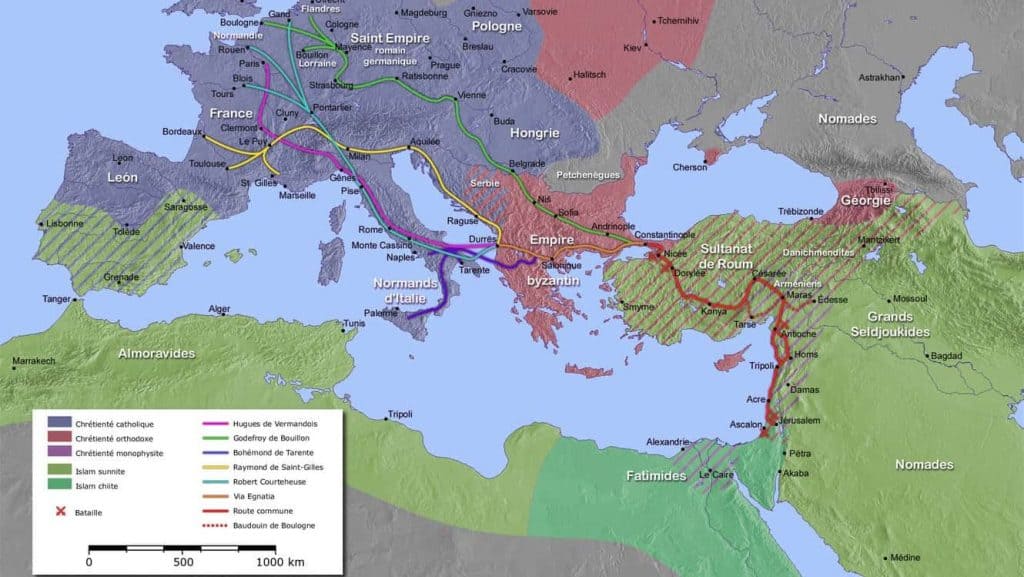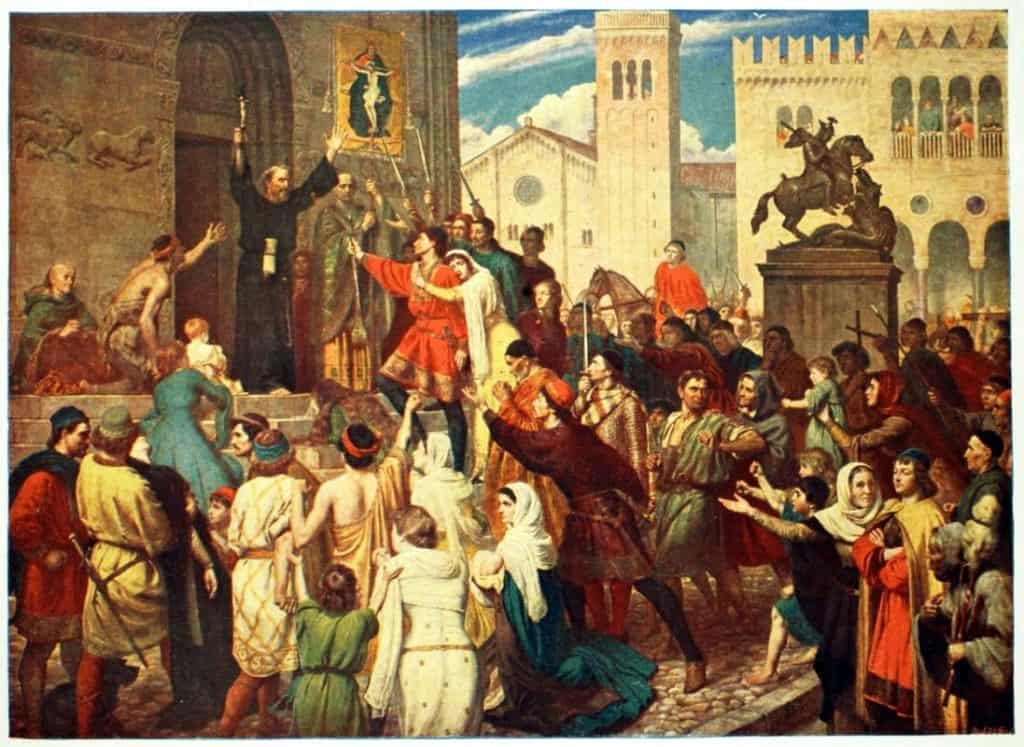Peter the Hermit, often called Peter of Amiens or Pierre l’Ermite in French, was a pivotal figure in the lead-up to the First Crusade. His fiery sermons and charismatic leadership inspired thousands to pilgrimage to the Holy Land, setting the stage for the People’s Crusade and, eventually, the more organized First Crusade. Peter’s life and mission provide a unique lens through which to understand the fervor and complexity of the Crusades.
Early Life and Background:
Peter the Hermit was born in Amiens, France, around 1050. Little is known about his early life, but he is believed to have been a small landowner. He later became a hermit, adopting an ascetic and contemplative lifestyle.
First Crusade

Peter the Hermit Call to Crusade:
Peter the Hermit’s transformation from a humble hermit to a charismatic preacher and leader began in the 1090s. According to accounts, he claimed to have received a divine vision urging him to take up the cross and lead a crusade to liberate Jerusalem from Muslim control.
Preaching and Recruitment:
Peter embarked on a fervent preaching campaign throughout Europe, traveling from town to town and addressing crowds. His charismatic sermons, delivered with fervor and urgency, touched the hearts of many. He emphasized the holy nature of the crusade and the need to reclaim the Holy Land from non-believers.
The People’s Crusade:
Peter’s preaching inspired diverse followers, including peasants, lower-ranking knights, clergy, and even women and children. This grassroots movement, known as the People’s Crusade, was characterized by its spontaneity and lack of central organization. Thousands of participants went on a pilgrimage to the Holy Land in 1096.
Challenges and Hardships:
The People’s Crusade faced numerous challenges, including a lack of provisions, clashes with local authorities, and tensions with Jewish communities. These tensions escalated into violent pogroms, the Rhineland Massacres, which targeted Jewish populations.
People's Crusade

End of the People’s Crusade:
The People’s Crusade reached Anatolia, where it encountered formidable Muslim forces. The untrained and undisciplined crusaders suffered a devastating defeat in battles against the Seljuk Turks. Peter the Hermit survived but returned to Europe.
Legacy
The precursor to the First Crusade: While the People’s Crusade failed, it served as a precursor to the First Crusade, which was better organized and ultimately achieved its goals.
Complex Motivations: Peter the Hermit’s preaching and leadership highlight the diverse motivations behind the Crusades, including religious zeal, the desire for adventure and wealth, and political considerations.
Historical Relevance: Peter the Hermit’s mission and the People’s Crusade are significant chapters in the history of the Crusades, shedding light on the grassroots movements and societal dynamics of the time.
In conclusion, Peter the Hermit’s journey from a solitary hermit to a charismatic preacher and leader of the People’s Crusade exemplifies religious fervor’s power to mobilize the masses. Furthermore, his role in inspiring the early waves of Crusaders demonstrates the profound impact of individuals in shaping historical events. More about Peter in Wikipedia!

